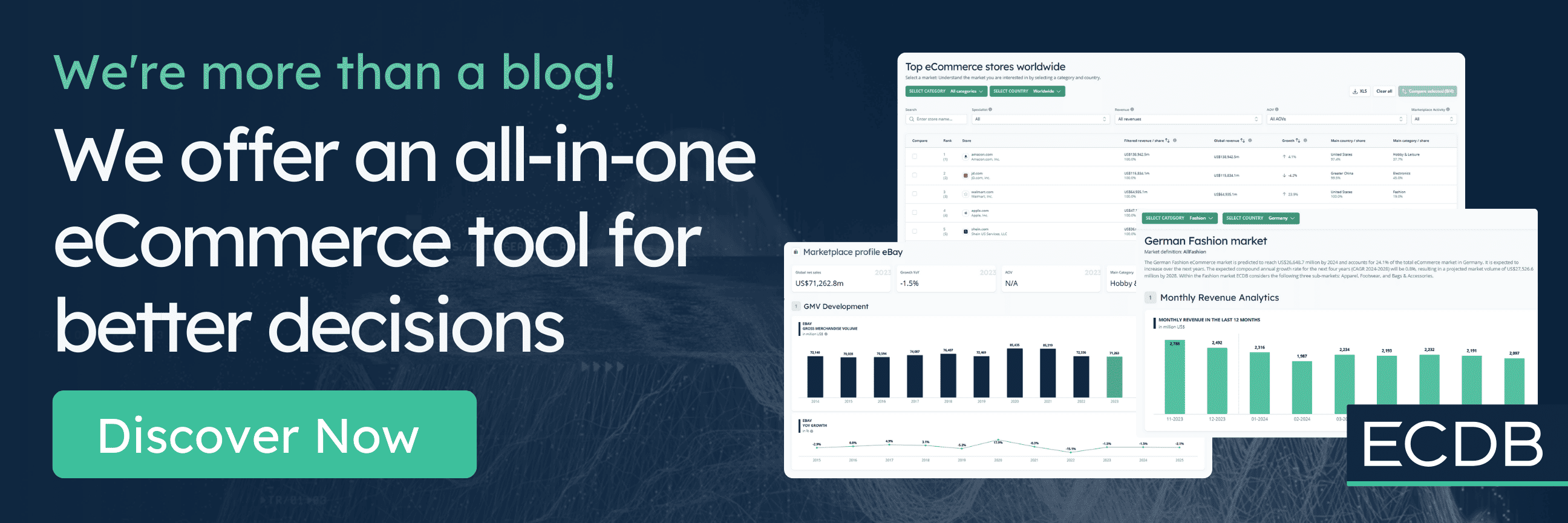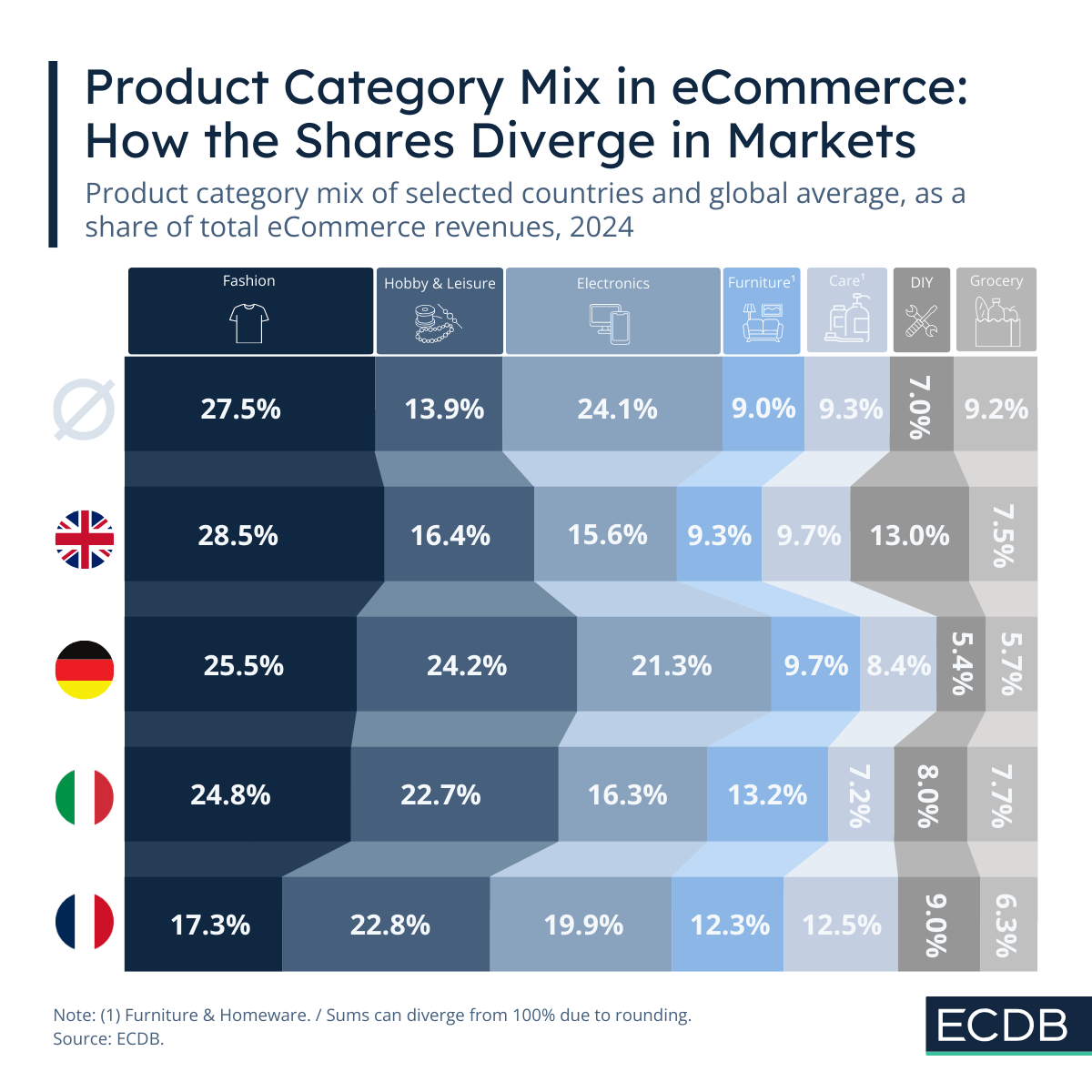Consumer habits and eCommerce industries differ from country to country – while Germany is known as a leader in Electronics, the UK's online Fashion market makes online shoppers' hearts beat faster.
Looking at four key eCommerce markets in Europe, what is the product category focus in each country?
Fashion Tends to Lead in Global eCommerce Revenues
Comparing the patterns with the global average reveals some similarities and differences. Fashion is the leading product category worldwide and accounts for the highest share of eCommerce revenues (27.5%). The same pattern is visible in the UK (28.5%), Germany (25.5%) and Italy (24.8%).
France is a little different in this respect, as its leading category for eCommerce is Hobby & Leisure (22.8%) rather than Fashion (17.3%). One factor in this divergence is a different shopping culture in France, where consumers may prefer channels other than eCommerce to stock up on clothing.
With one exception, Fashion is an obvious category for eCommerce. Its items are easily distributed, highly sought after due to ubiquitous marketing, and a growing number of retailers across the price spectrum are participating. A number of technologies that facilitate the purchase of fashion through virtual try-ons add to its global appeal.
Electronics Is Important Globally and in Germany
Germany jumps the bandwagon when it comes to Fashion as the number one eCommerce revenue generator (25.5%). But close behind is Hobby & Leisure (24.2%), followed by Electronics (21.3%). Together, these three categories account for 71% of eCommerce revenues in German eCommerce. This is the highest share of the markets considered, including the global average, where Hobby & Leisure is less important.
Electronics eCommerce tends to be less significant in the UK, Italy, and France. This suggests that consumers in these eCommerce markets prefer to consult and test products in-store before buying. It contrasts with the global average, where Electronics is the second largest eCommerce revenue generator.
The importance of Electronics to global eCommerce sales is supported by relatively high costs and good shipping capacity. However, as evidenced by the relatively low shares in some markets, the willingness of consumers to choose online channels over physical retail plays a critical role.
Some Outliers: Furniture, Care Products, DIY & Grocery
Some of the categories that are less significant for overall eCommerce, such as Furniture & Homeware, Care Products, or DIY, tend to have market outliers where they perform well.
This is the case for DIY in the United Kingdom (13.0%), which does not exceed 10.0% in any of the selected markets or the global average. Similarly, Furniture & Homeware accounts for 13.2% and 12.3% of eCommerce revenues in Italy and France, respectively, but is less significant elsewhere.
A special global case is Grocery. It is one of the categories identified as a growth driver in worldwide eCommerce, but in the markets under consideration its share of total revenues is low, i.e. lower than its global share.
In worldwide eCommerce, 9.2% of revenues are generated by Grocery, compared to around 7.5% in the UK and Italy, 6.3% in France and just 5.7% in Germany. Again, a combination of consumer habits and the provider landscape explains the below-average importance of Grocery in most markets. But as the industry evolves, the share of Grocery eCommerce is growing, as has been seen in the last five years alone.










